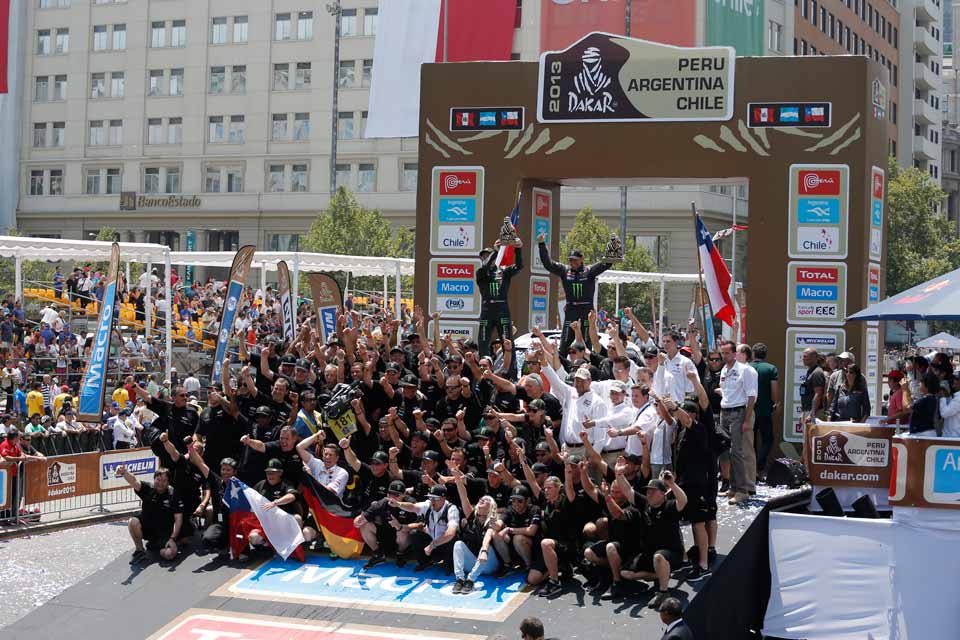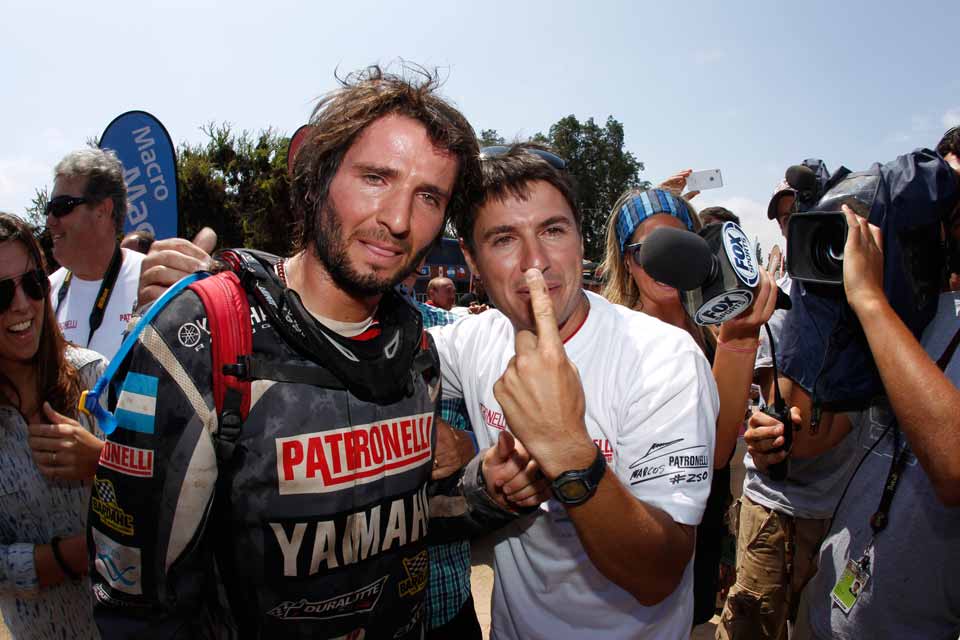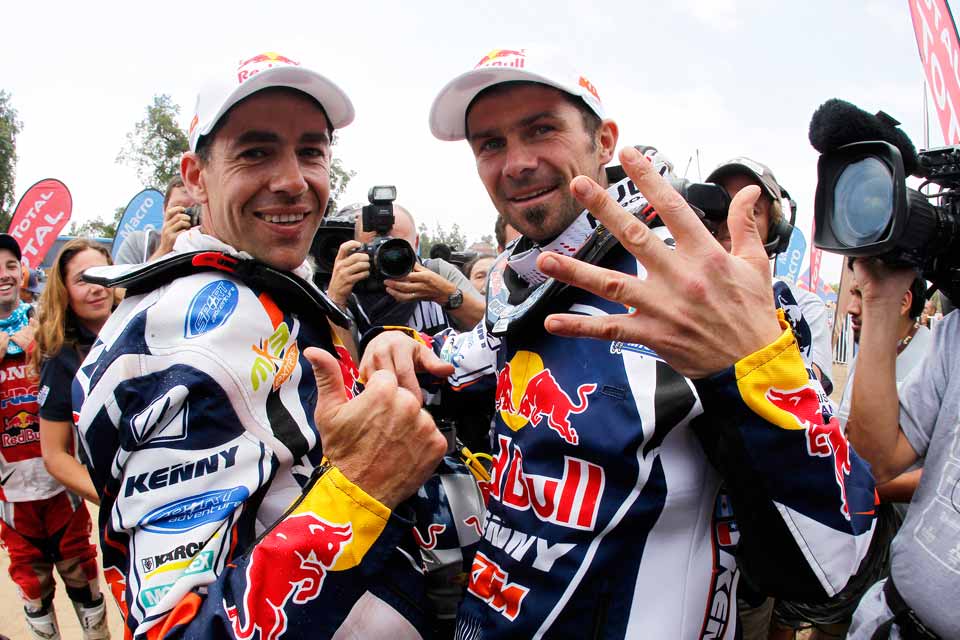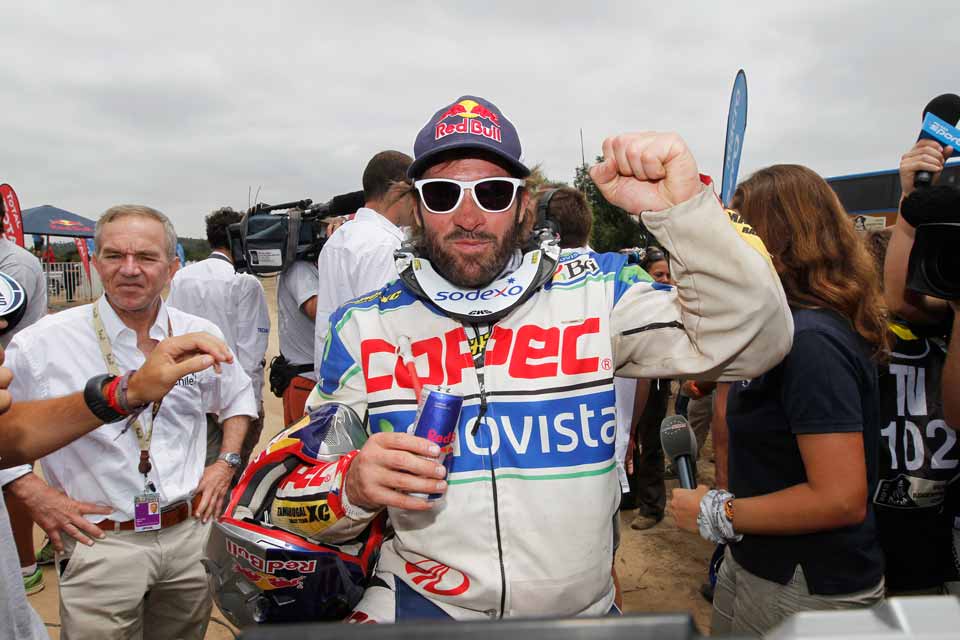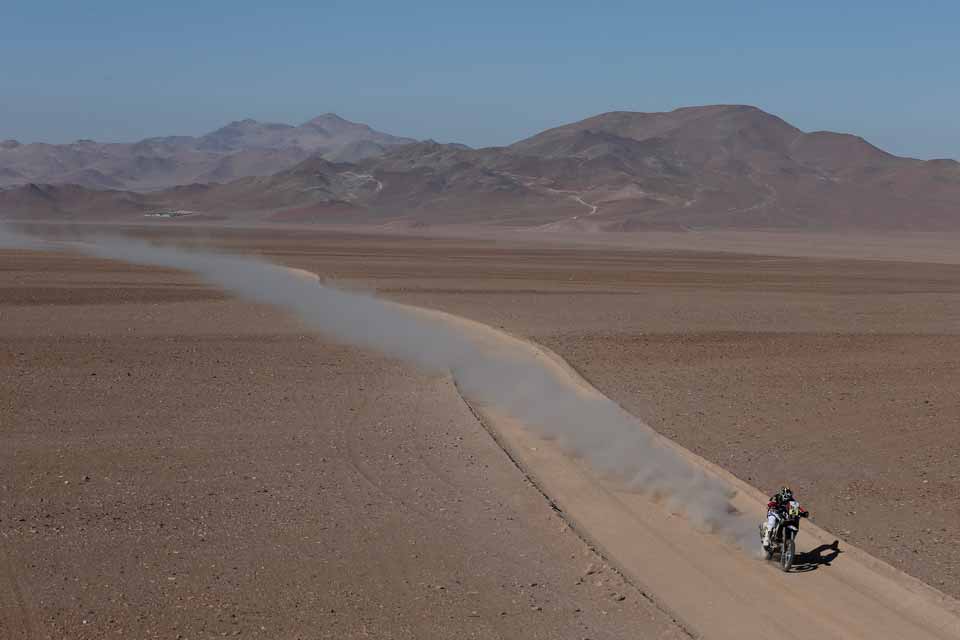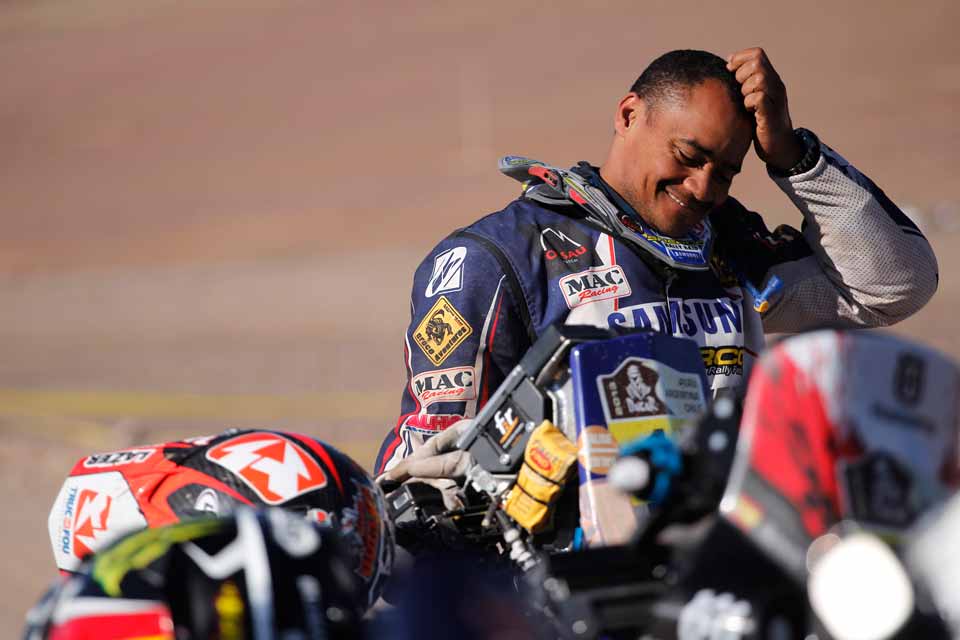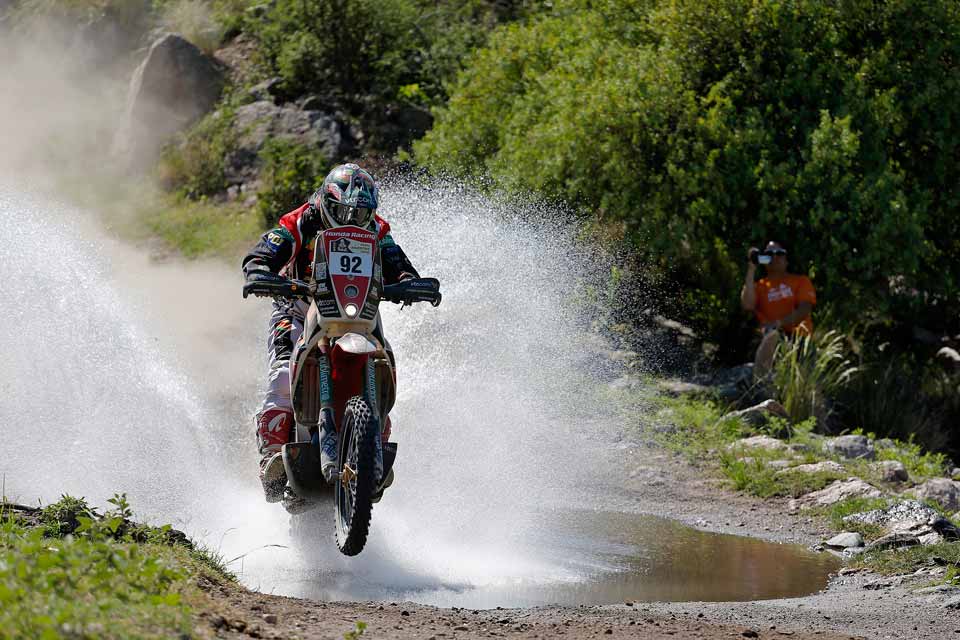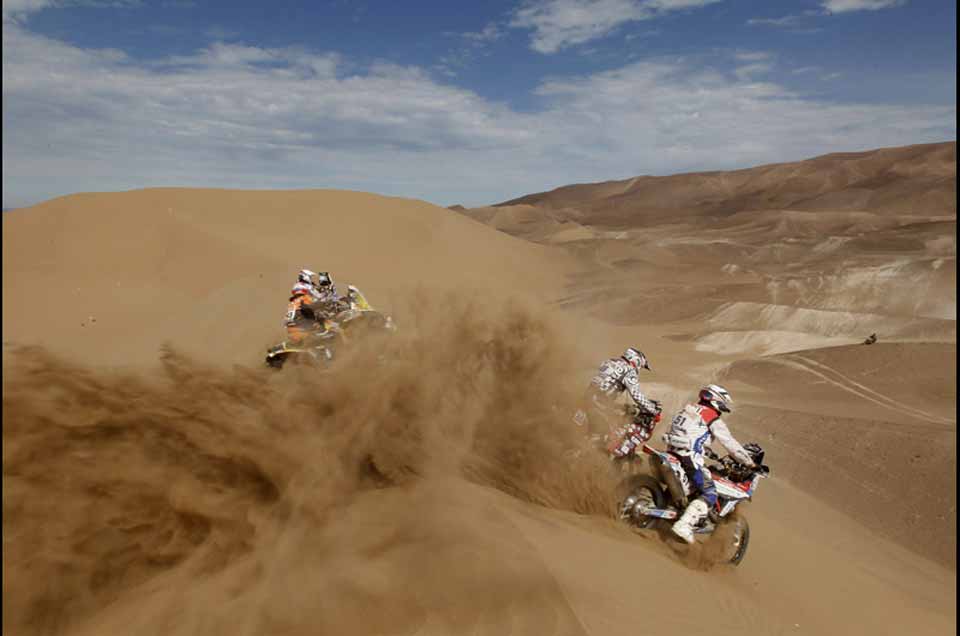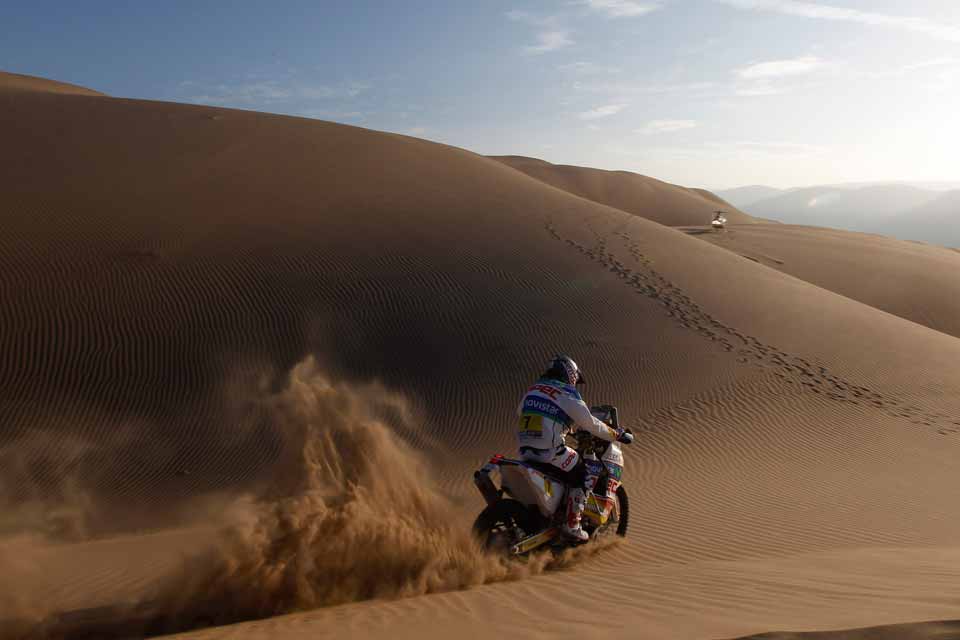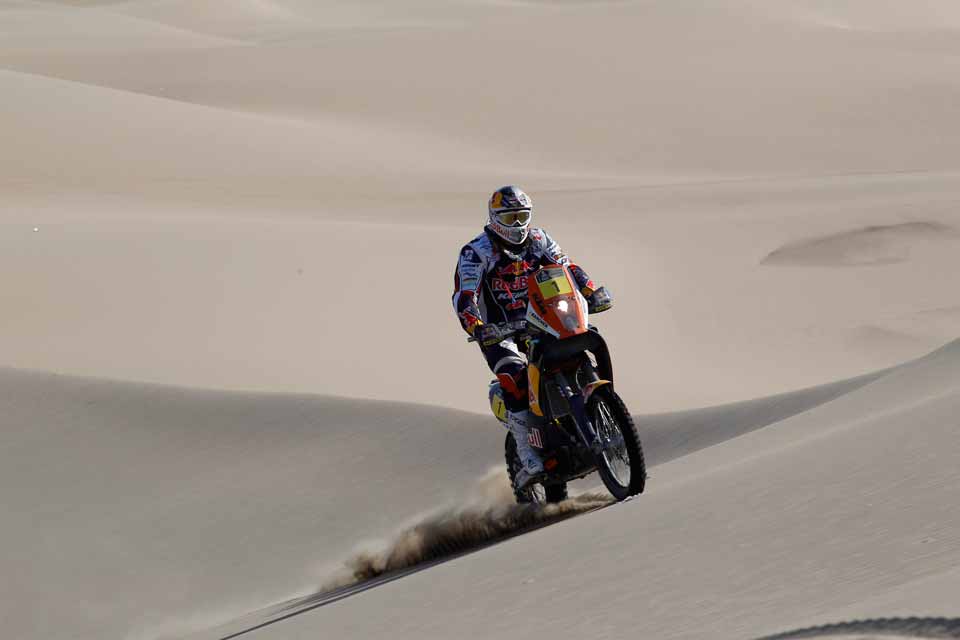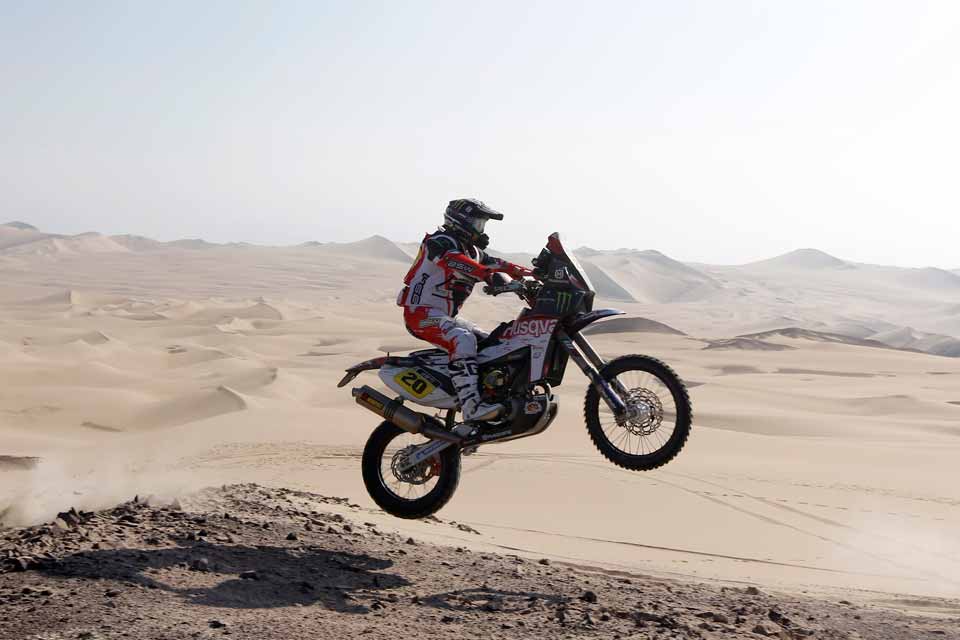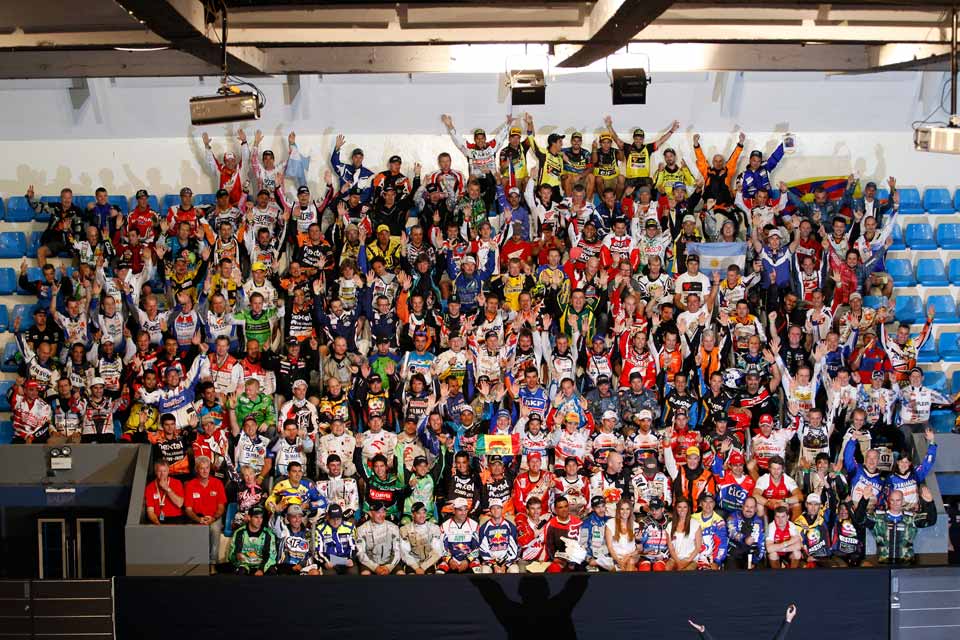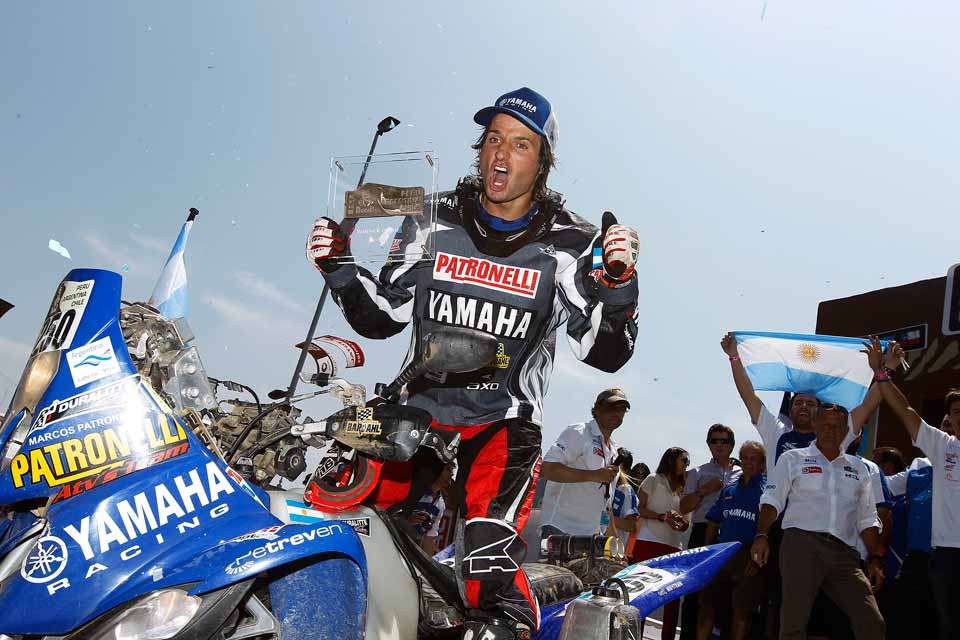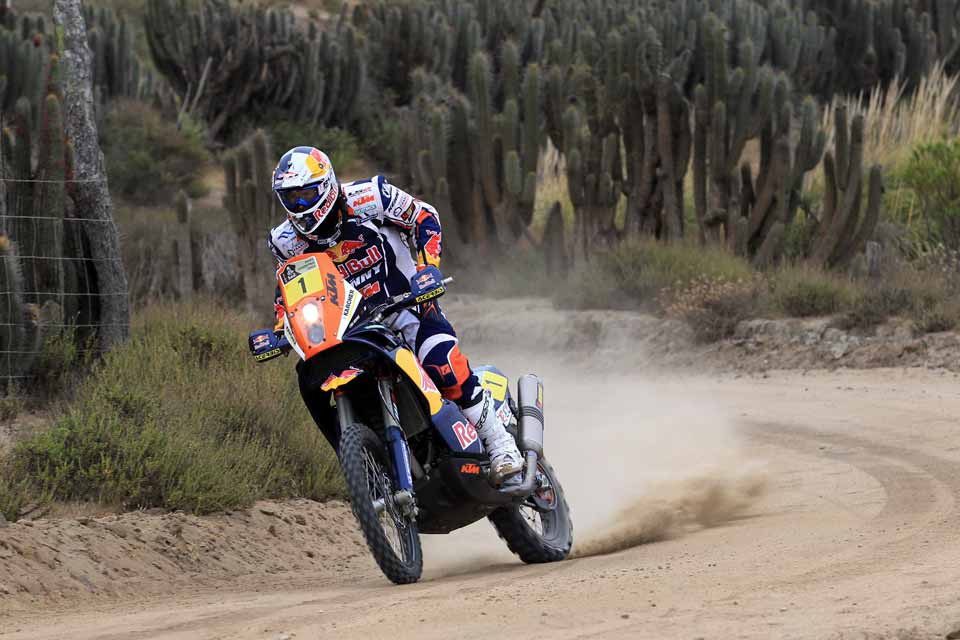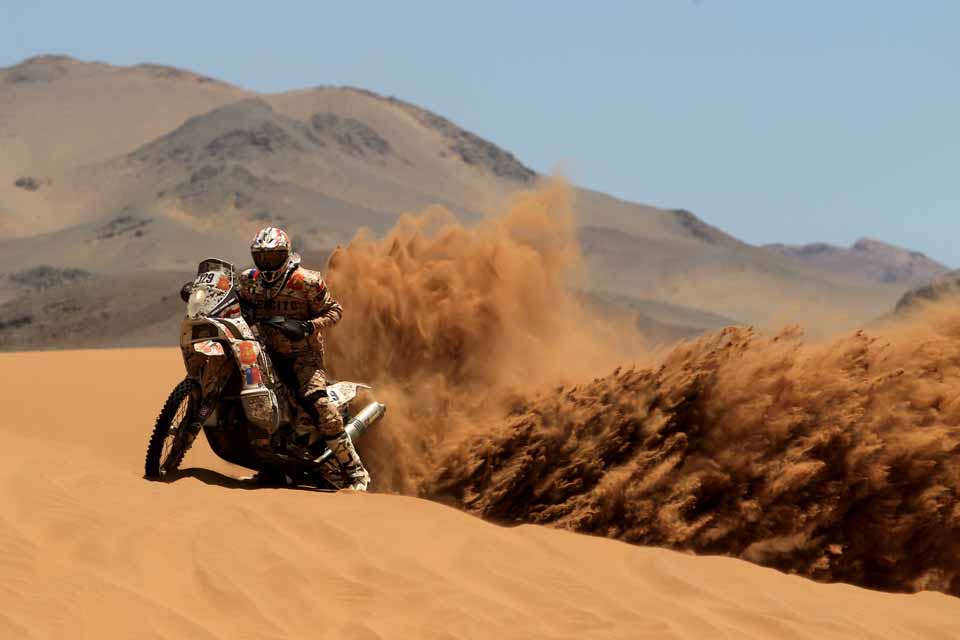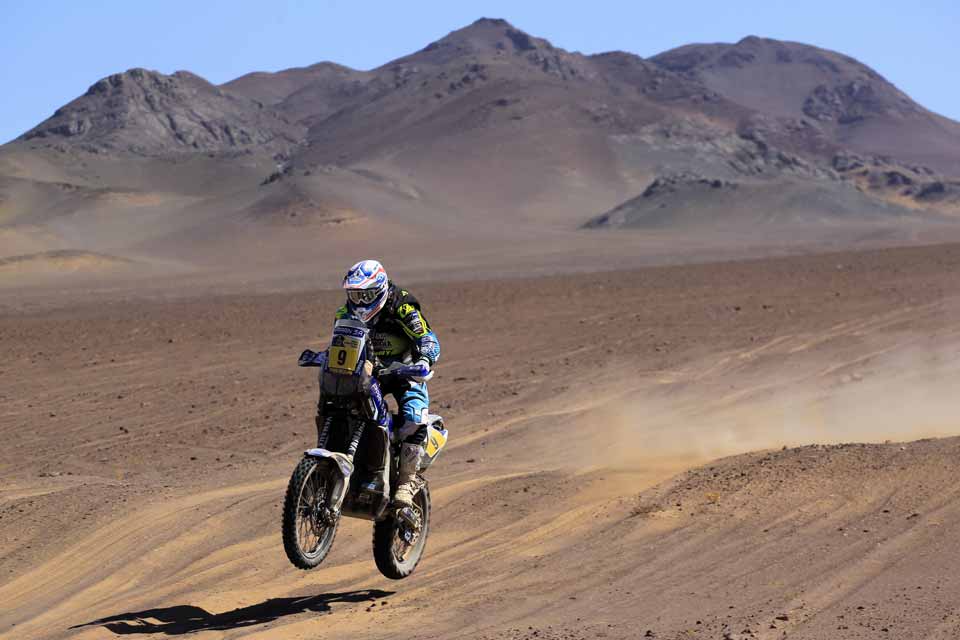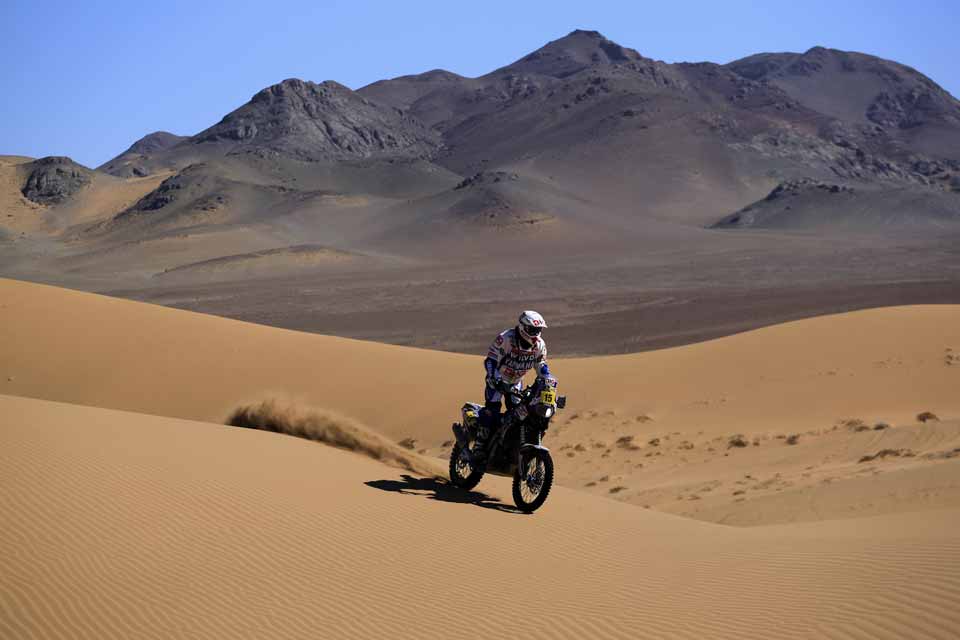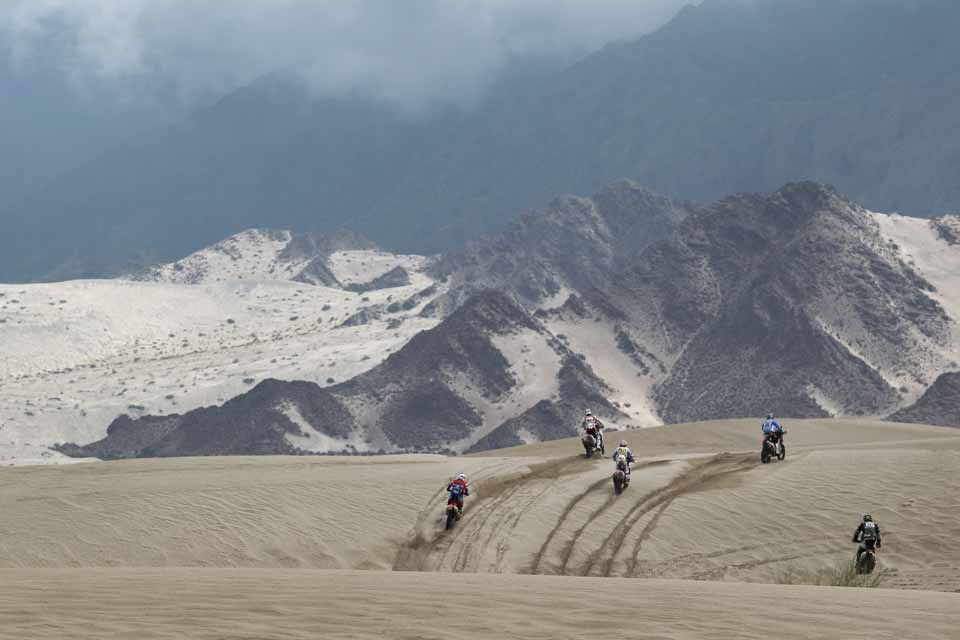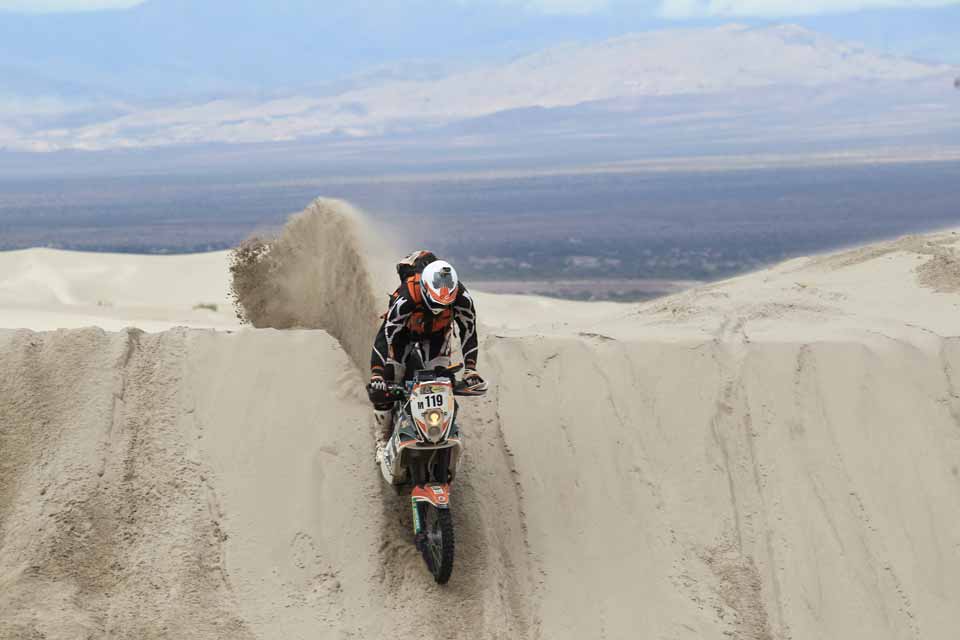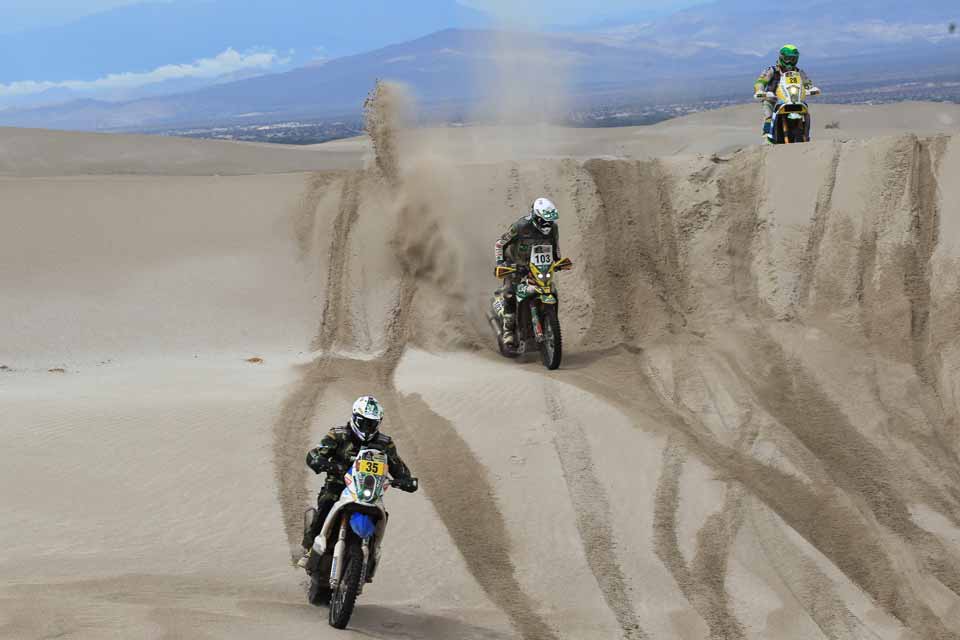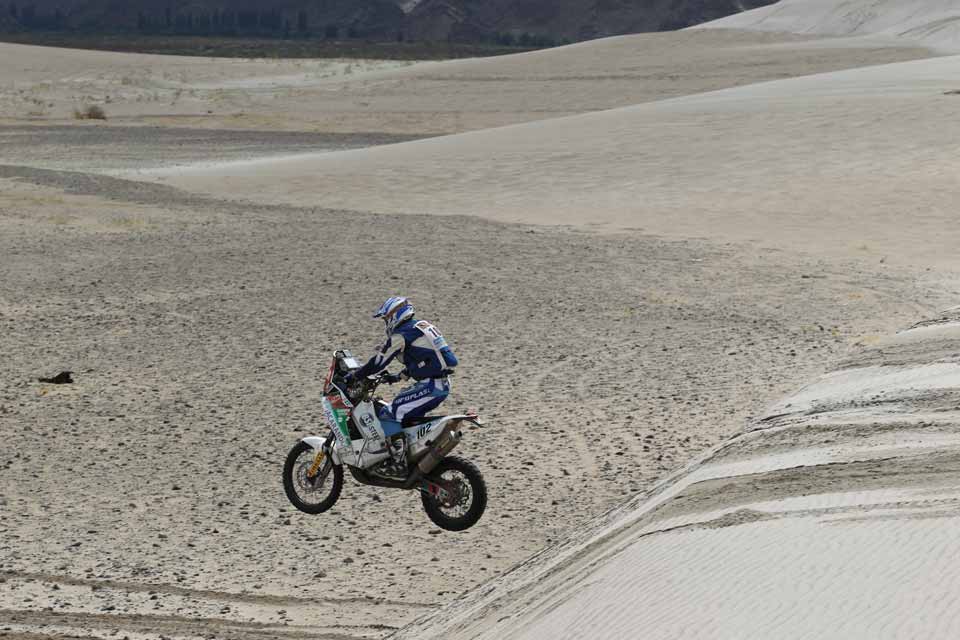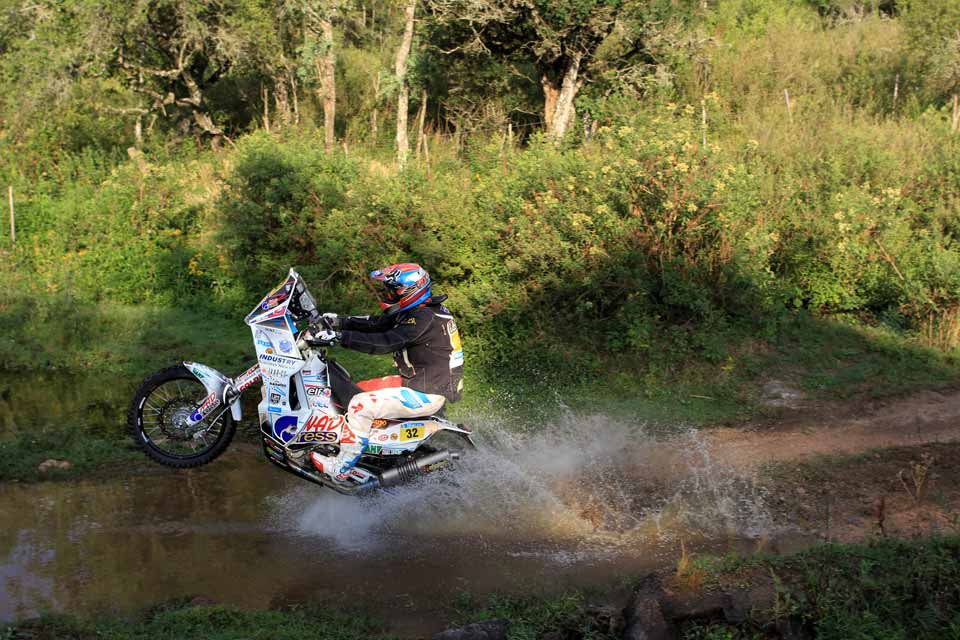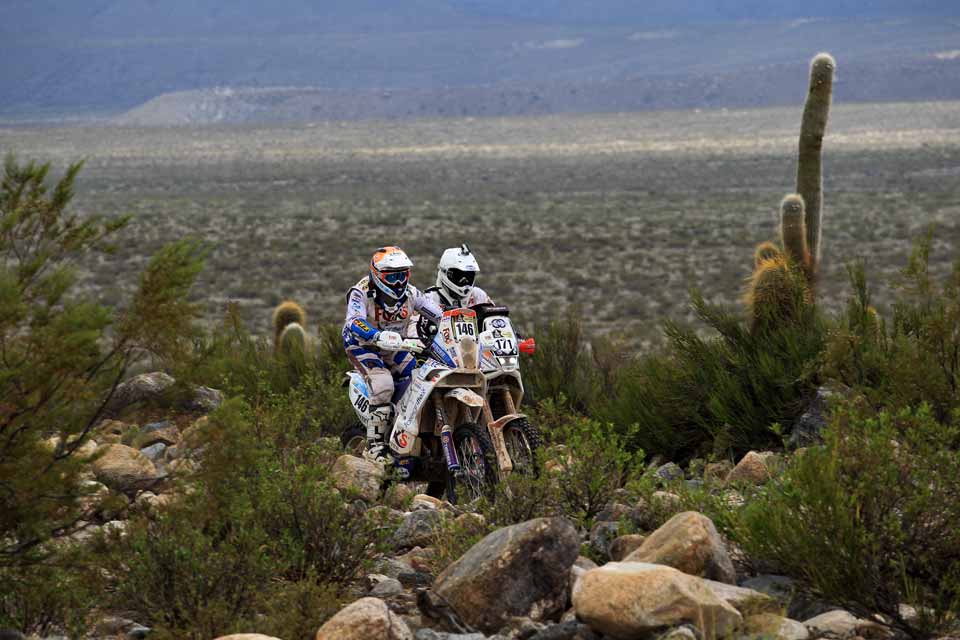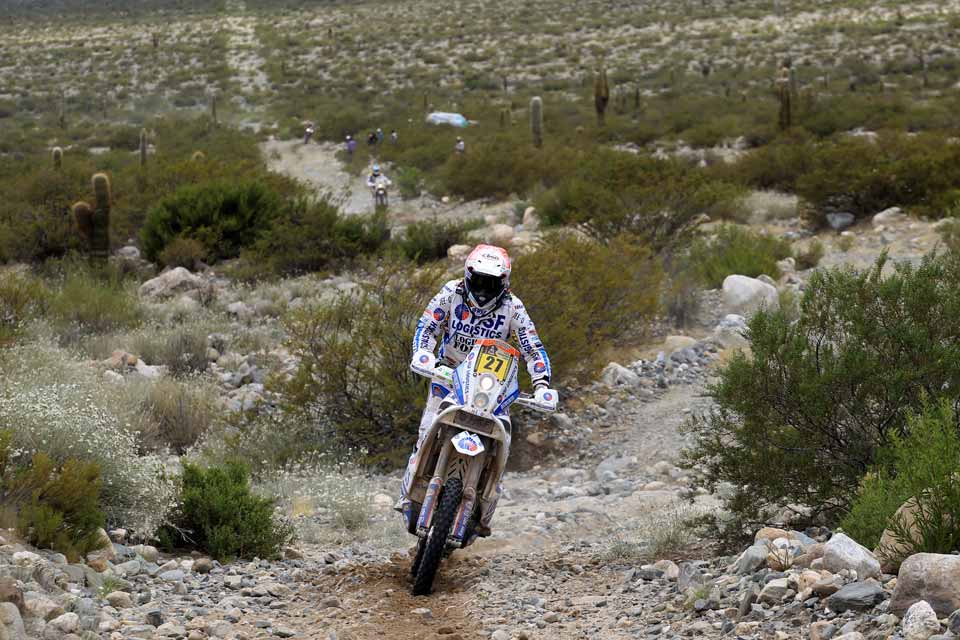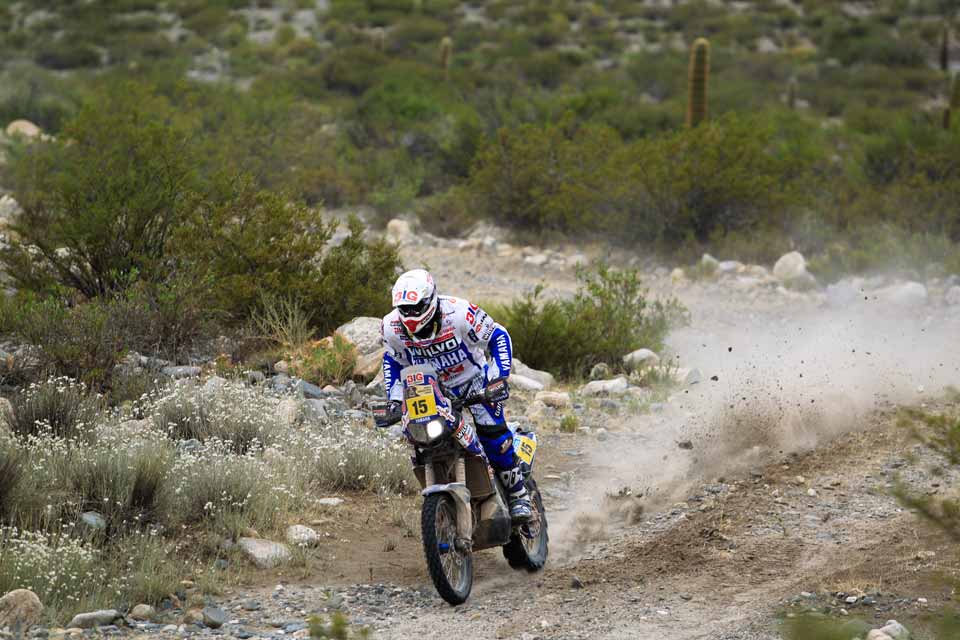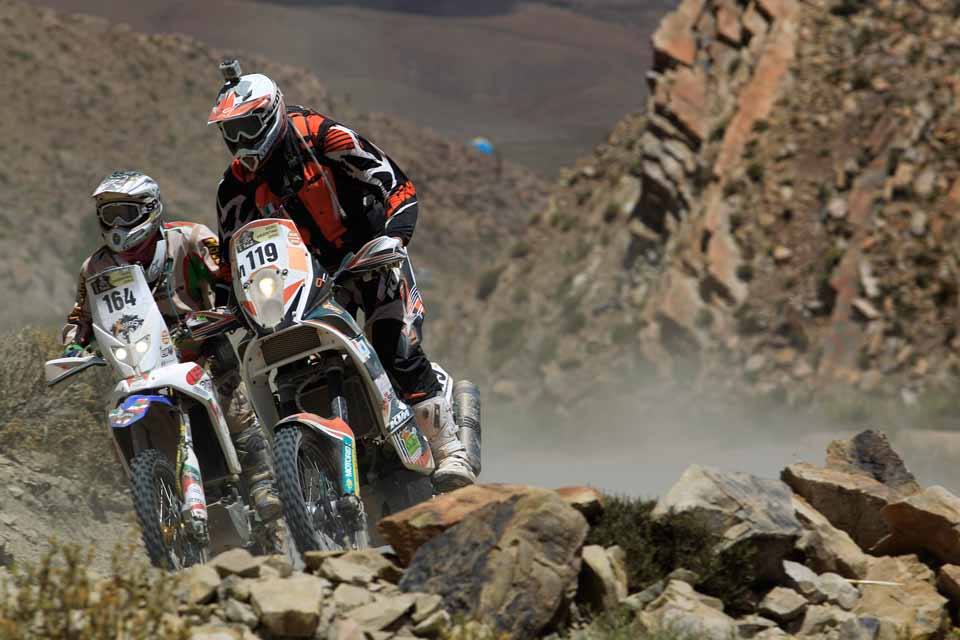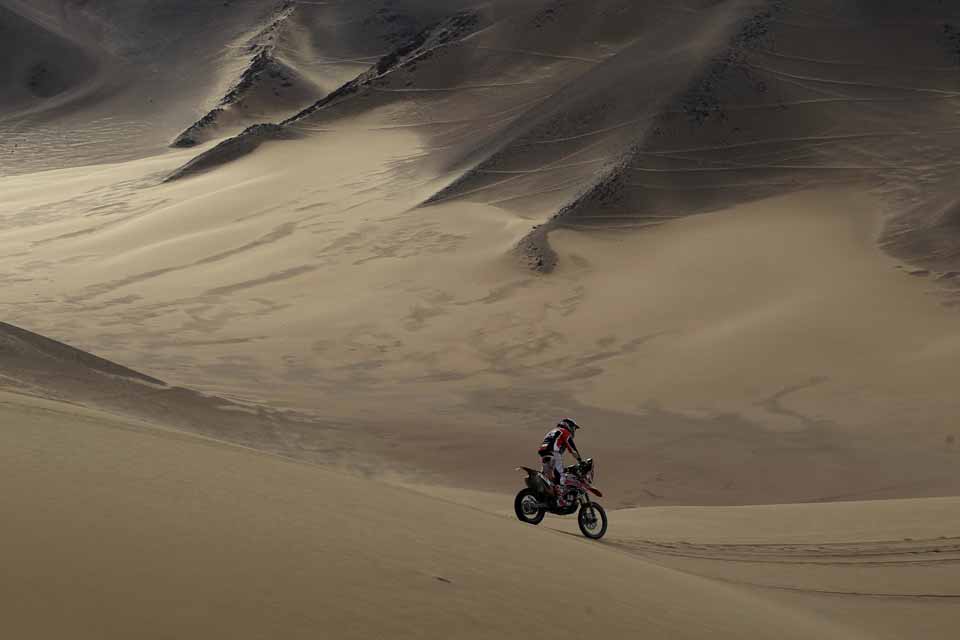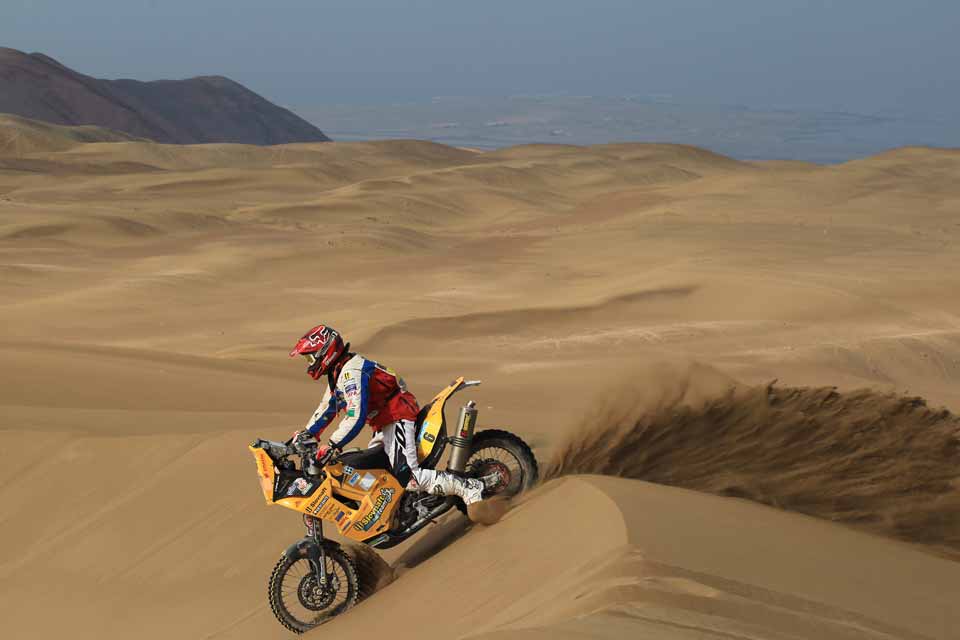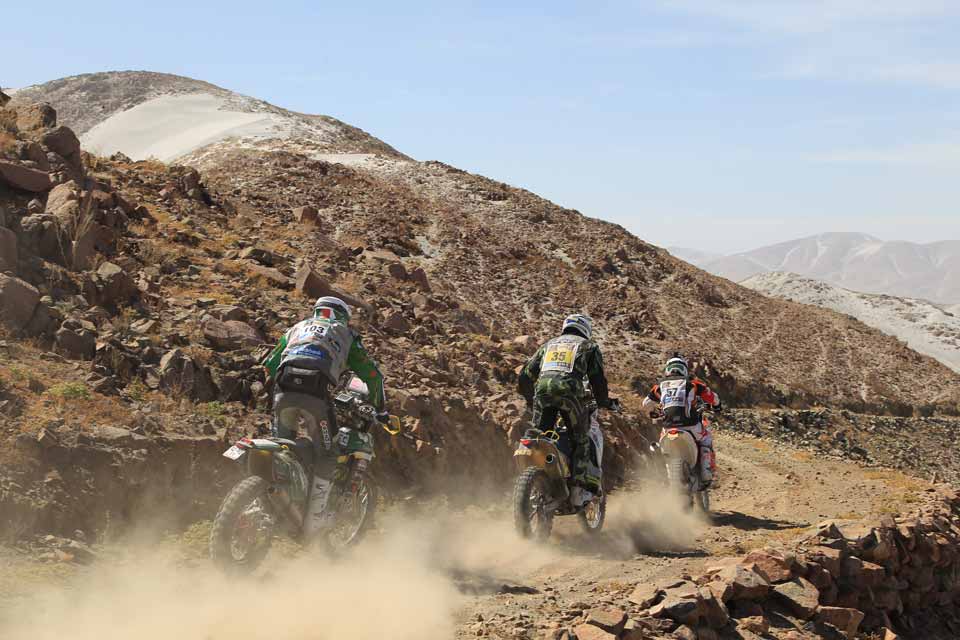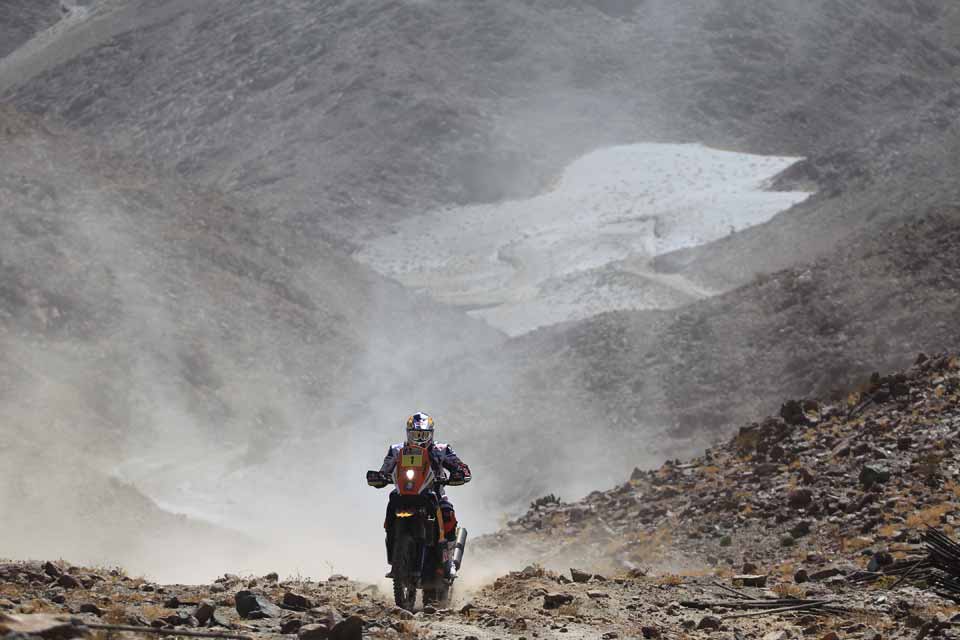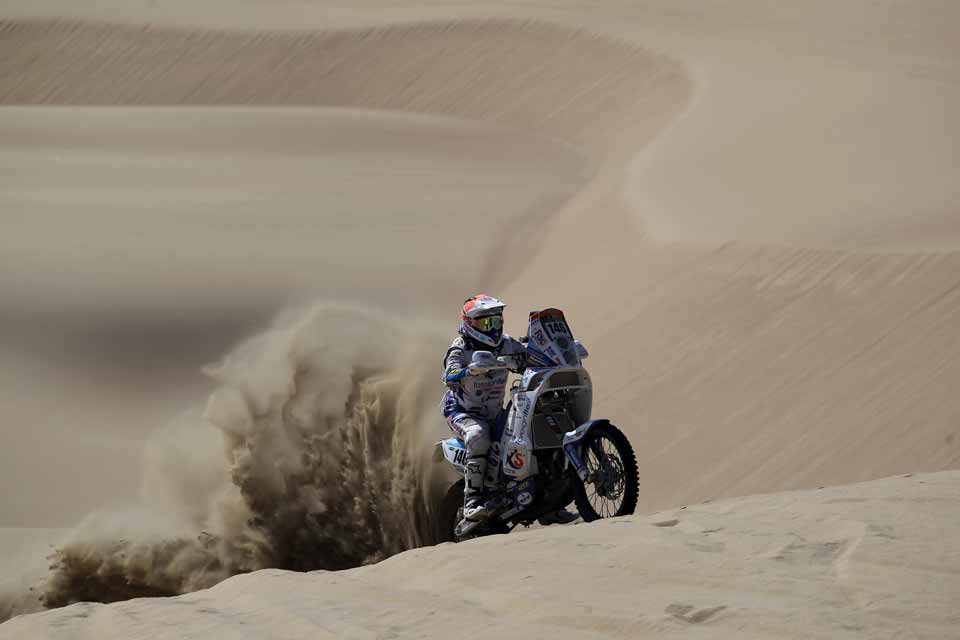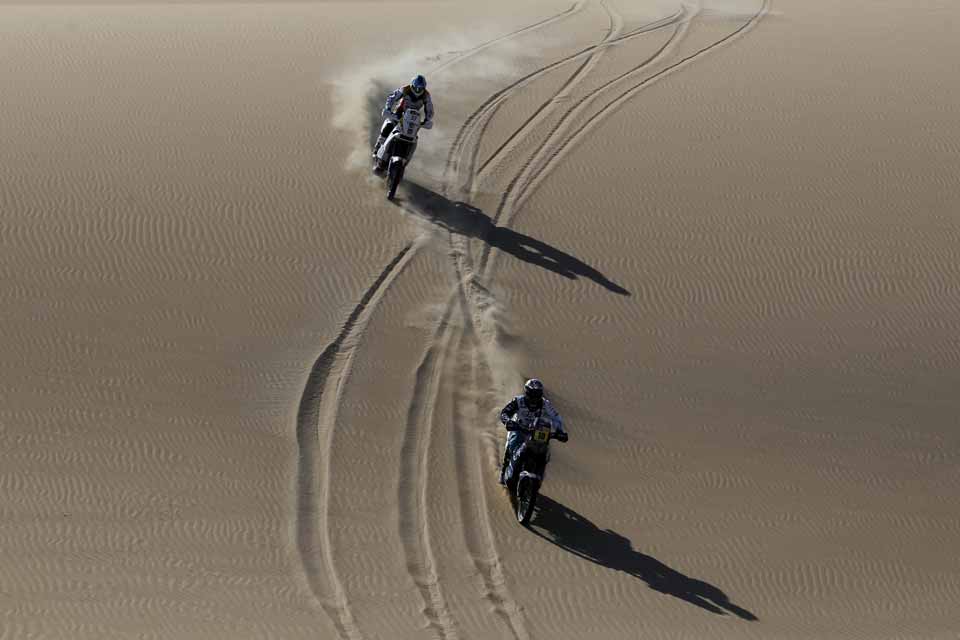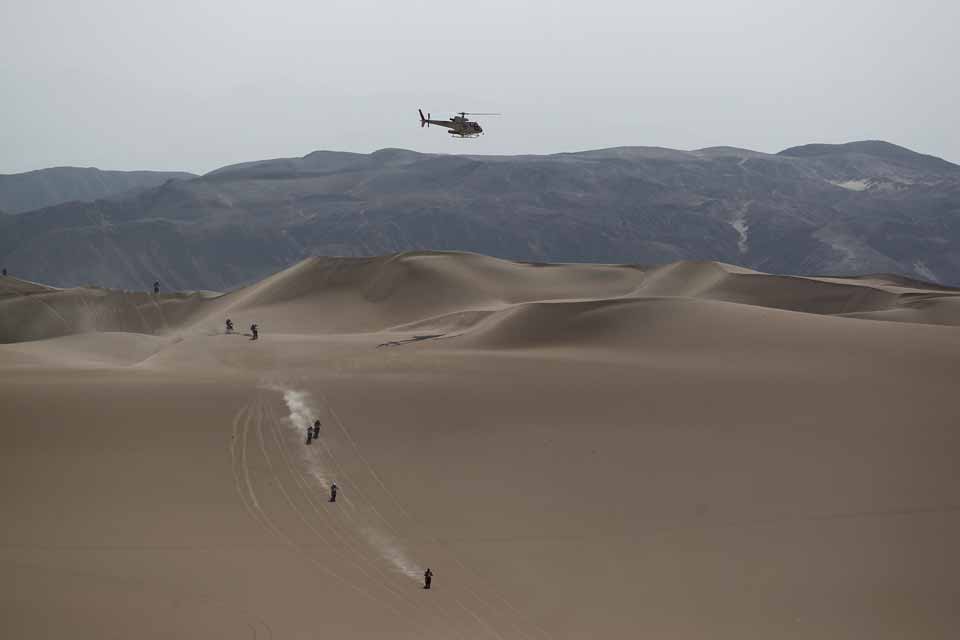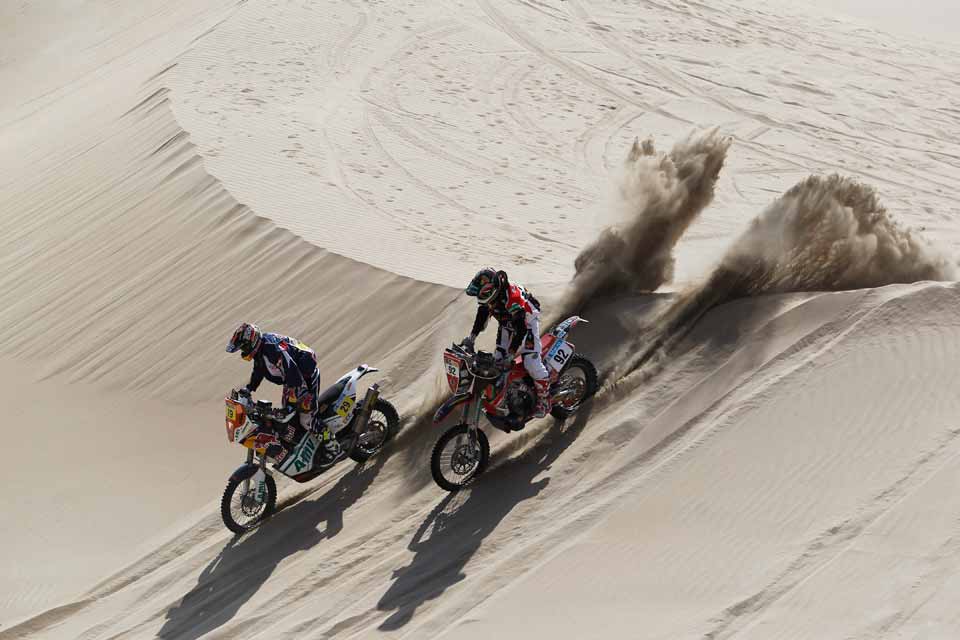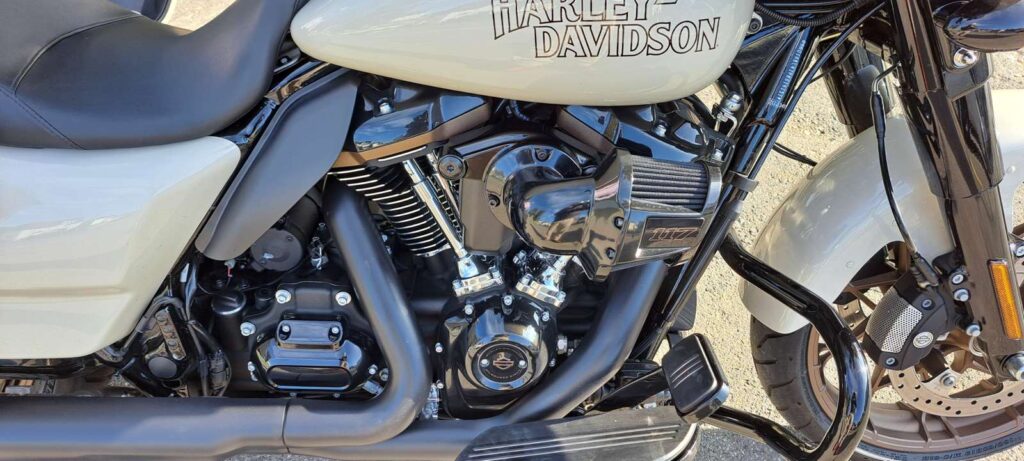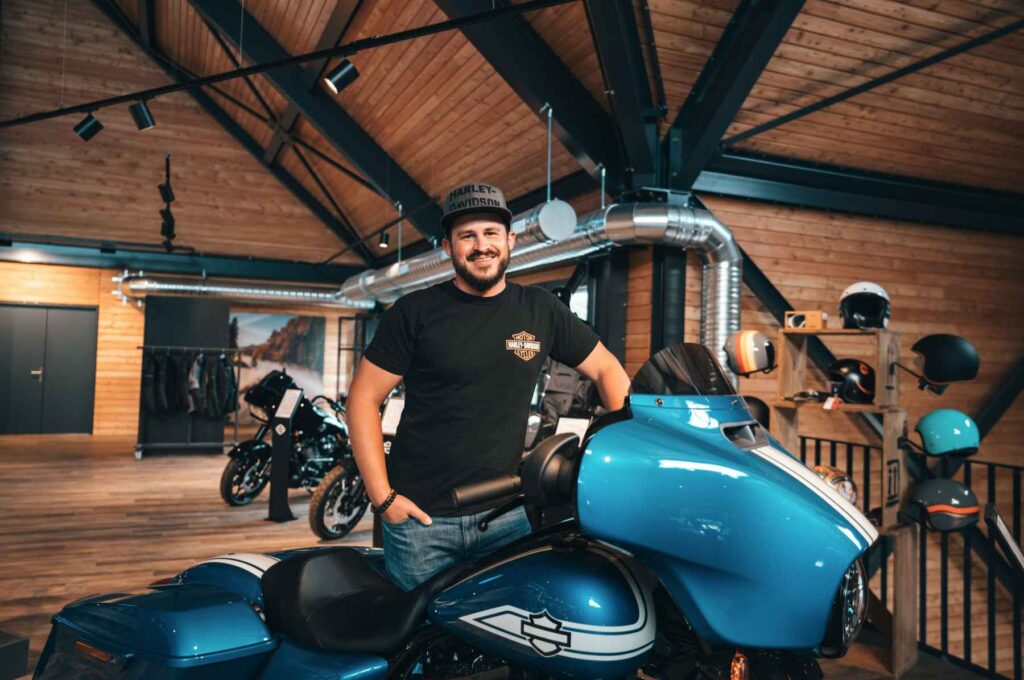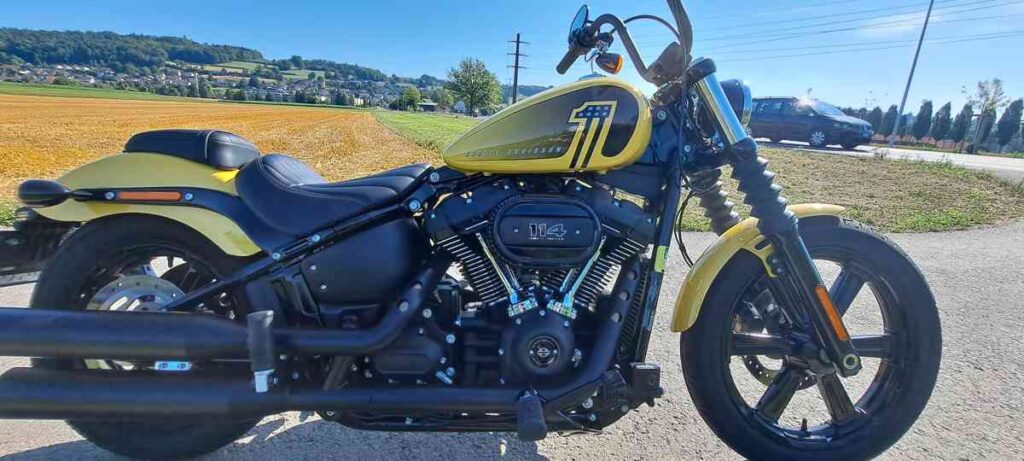The biggest stage rally in the world still fascinates. Once started by a biker, it has had its ups and downs, sometimes thrilling, sometimes discouraging, but it has lost none of its fascination. It is probably still the last great adventure that exists for bikers.
by Rolf Fleckenstein, Mac Huber
As a former Ténéré rider, I experienced the hipe firsthand in the mid-1980s, when the fame, popularity, and fascination of this spectacular race through the African desert was emerging. Especially during the heyday of this race, the French papers were full of detailed stories with generous photo spreads about the Paris-Dakar Rally. And yet, it took quite some time to get there. One must not forget that before this rally became popular, there were no "desert machines" at all. Enduros at the beginning of the 80s had, when it came up, 500 cubic capacity and a small tank, which was enough for the usual routes and requirements in the European, civilized environment. But the French, who as a former colonial power also felt at home in Africa, undertook adventurous journeys through the desert areas of North Africa early on, at that time still with self-made desert machines with specially designed luggage systems with additionally bolted-on tanks, it looked adventurous. One must not forget, who drives alone and without support in the desert, must be prepared, here does not wait immediately around each corner speak dune a gas station attendant or a workshop, here one must see alone, how one gets along, but exactly therein lay also the attraction, to detach oneself from the civilization and its sheer endless securities and to chug on own fist and own risk and to look for oneself whether and that one comes home again safe.
The idea for the biggest race in the world
It was Thierry Sabine, after all, who himself fell victim to the dangers of the desert. As a motorcycle racer at the time, he was already organizing various smaller rallies through the African desert in the mid-1970s when he went missing for several days during the Abidijan-Nice rally in 1977 and got lost in the Libyan desert. Despite, or perhaps because of, the horrible event and the uncanny dangers he was exposed to, the fascination of the desert never left him. The battle of man against desert shaped his life. He is often quoted as saying "if life gets boring, risk it". Inspired by this experience, he founded the Paris-Dakar Rally, which started in Paris on December 26, 1978, and ended in Dakar on January 14, 1979. A marathon race of this kind had never been seen before and remains unbeaten to this day, it is still the biggest rally in the world. This unusual length with daily stages of around 800 km through the desert placed huge demands on man and machine. Many private riders without factory support soon had to fail miserably because they got stuck in the desert sand, hit their motorcycle on a hidden rock or fell victim to an accident. And even if they managed the stages, they were still allowed to play mechanic when they arrived, totally exhausted, and that was hardly or not at all physically possible over the length of two-three weeks. Soon it became clear that a support team was needed to keep the riders ahead in the race, so that they could concentrate on the ride alone and at night a team of mechanics could bring the machine back up to speed with the spare parts and accessories they had brought along.
A new industry awakened
The race and its growing popularity began to wake up the motorcycle industry, and more and more riders were supported by big brands. The race pushed its own market and so, in the wake of the race's fame and popularity, new machines and a new type of motorcycle came onto the market in the sense of a "desert-suited long-distance enduro" with a large tank, which, in keeping with the globally respected race, was also supposed to have features suitable for an adventure ride through the desert. The most popular and best-known machine in the mid-1980s was certainly the Yamaha XT 600 Ténéré. To this day, these endurance enduros have remained in the market, even if they have been modified over time for everyday use in civilization.
The race is new, the fascination remains
Today, the race is accompanied by a mega-trot - the tent city is bigger than a football field - and helicopters, team vehicles and, everything that goes with it, accompany the drivers on their grueling journey through the desert with its adversities, so that they reach their destination safely. But despite the support, the race has lost none of its fascination, because it is still the largest and most spectacular rally race in the world. Even the relocation to South America has not harmed its popularity, even if it is less noticed in Europe today than it was in its heyday. The culprit was a terror threat directed at the Paris-Dakar Rally at the end of 2007, which led to its unexpected cancellation one day before the 2008 race. Shortly before, four French tourists and three soldiers had been killed. This incident had led the organizer to cancel the 2008 rally and choose a new location to hold it, which it found in South America in 2009 and has since called itself the Dakar Rally and no longer Paris-Dakar. Given the always tense situation in North Africa, a return of the rally to the African continent is certainly not expected soon. It's a shame really, because the annual start in Paris at the beginning of the New Year was always a highlight for Europe. Today, the race is an institution and has long since become a globally observed and respected event that has written sports history.
Death rides with
Despite moving the multi-stage competition from Africa to South America in 2009, despite clear guidelines, limited top speeds and additional safety measures such as the distance warning system, which ensures that individual cars or motorcycles do not get too close to each other, the Dakar Rally causes tragedies year after year. The Sensemann is a reliable co-driver in the world's toughest desert race. The list of deaths at the Dakar Rally grows longer every year. Since 1979, 63 people have lost their lives in the brutal desert race - mainly motorcyclists, but also spectators, children, helpers, service personnel and journalists. Only the Isle of Man Tourist Trophy, the most dangerous and controversial motorcycle race in the world, in which participants risk their lives at 200 km/h between houses, stone walls and embankments, has claimed more lives in that time. However, the Dakar Rally has lost none of its fascination and appeal. On the contrary: Never before have the competitors come from so many different countries (53) as this year. Never before have so many fans followed the rides, joys and frustrations of the drivers. Five million are said to have been along the route alone, which led from Lima (Peru) over an arduous 8,424 kilometers (for bikes) to Santiago de Chile. Around a billion people were watching the race on their TV screens. Despite all the prophecies of doom, the Dakar Rally is more popular than ever.
"More brutal than any woman"
183 motorcycles, 38 quads, 75 trucks and 153 cars battled their way south through South America in the 34th edition of the rally. Twice it went over the Andes and for the first time through the Atacama, the driest desert in the world, where in certain places not a single drop of rain has fallen in decades. "The route is more brutal than any woman," Spanish motorcycle rider Joan Barreda was quoted as saying. "You hardly think you've got it under control before it's already thrown sand in your eyes again."
Particularly tough for man and machine: In many canyons, the rocks are only covered by a layer of sand or dust and are therefore barely visible to the drivers. The special stages in the oxygen-poor altitudes of 3,500 to 4,000 meters above sea level and the crossing of the 4,975-meter Jama Pass on the way to Argentina made matters even more difficult.
"The Dakar is just too long, too hard, too hot, too cold," explains KTM factory rider Cyril Despres, "you have to find your way in the maze of dunes in Peru and Chile. You have to fight rocks and cacti on the course around Córdoba. You have to fight, fight, fight. It's way too difficult to just win." Despres nevertheless celebrated his fifth overall victory after the more than 8,000-kilometer Tortour. The 38-year-old Frenchman also benefited from the absence through injury of co-favorite and teammate Marc Goma, who had triumphed in 2006, 2009 and 2011.
Even the results are peculiar
I must confess that I don't know exactly what the statistics are for other rallies, but it seems to me that the Paris-Dakar Rally, or today's Dakar Rally, is always dominated by the same riders over a certain period of time. In the past 35 years and the 34 completed races, only 11 winners have been chosen in the motorcycle category. At the beginning of the rally, the Frenchman Cyril Neveu - as the first winner in the motorcycle category - and Edi Orioli took turns in holding the trophy, which has been lifted not only by Cyril Neveu a total of five times, but also by Edi Orioli four times, by Stéphane Peterhansel as the front-runner six times and by this year's winner Cyril Despres already five times. Unique drivers or top team behind them? We are not supposed to answer that question here and now. But what does it mean for the future of the rally? When asked recently if Cyril Despres will participate again in the 2014 race and if he will again aim for the title, he said, "Everyone is asking me at the moment if I will continue and try to set Peterhansel's record, my answer is " Yes ". But I don't want to continue because I want to set records, but simply because I'm still as fascinated by this race as I was when I first took part in 2000. And as long as that's the case, I'll be back". The fascination of the biggest rally race in the world has not only remained with the spectators, but also with the drivers, and that promises a lot for the future.
Ranking 2013 | |||
|---|---|---|---|
RANG | DRIVER | NATION | MACHINE |
1 | Cypril Despres | FRA | KTM |
2 | Ruben Faria | POR | KTM |
3 | Francsisco Lopez | CHL | KTM |
4 | Ivan Jakes | SVK | KTM |
5 | Juan Pedrero | ESP | KTM |
6 | Olivier Pain | FRA | Yamaha |
7 | Helder Rodrigues | POR | Honda |
8 | Javier Pizzolito | ARG | Honda |
9 | Frans Verhoeven | NLD | Yamaha |
10 | Paulo Gonçalves | POR | Husquarna |
11 | Cuba Przygonski | POL | KTM |
12 | Daniel Gouët | CHL | Honda |
13 | Riaan Van Niekerk | RSA | KTM |
14 | Rodney Faggotter | OFF | Yamaha |
15 | Ben Grabham | OFF | KTM |
16 | Pal Ullevalseter | NOR | KTM |
17 | Joan Barreda Bort | ESP | Husqvarna |
18 | Michael Metge | FRA | Yamaha |
19 | Henk Knuiman | NLD | KTM |
20 | Felipe Prohens | CHL | Honda |
